ROUTE OF THE MAYA
November 9 - 26, 2010
Page Three
Honduras
Honduras is slightly larger than Virginia with a population of 8 million. 90% of the population is Mestizo (mixed Amer-Indian and European). 6 years of education is required. The Government is a democratic constitutional republic. Honduras was originally inhabited by indigenous tribes, the most powerful of which were the Mayans. Columbus landed on Honduran soil in 1502. Honduras gained independence from Spain in 1821, then was briefly annexed to Mexico. The country had a long period of military dictatorship in the 1900s and there was a military coup in 2009, but a free election was conducted in November 2009. Honduras is one of the poorest countries in the Western Hemisphere with about 65% living in poverty. There is a large subsistence farming population with few economic opportunities. About 1 million Hondurans have migrated to the U.S. Money from Hondurans living abroad, mostly the U.S., is a major contributor to domestic spending.
The Mayan ruins of Copan, like Joya de Ceren, is a UNESCO World Heritage Site. It is the most elaborate of the Mayan city-states that we visited on the trip. Copan ranks among the most important of Maya sites in large part because of its vast number of hieroglyphic texts. For its relative small size, the amount of inscribed writing is amazing, indicating that the elite culture of this ancient kingdom was especially interested in literate culture.The vast majority of inscriptions are found on numerous stelae (altars and architectural stones). The texts are typically short, relating to specific ritual and dedicatory information on the monuments. Copan is located in the Copan Department of western Honduras not far from the border with Guatemala. It was the capital city of a major Classic period kingdom from the 5th to 9th centuries. A major portion of the eastern side of the city has been been eroded away by the Copan River, but the river was diverted by the Carnegie Institution in the 1930s to protect the site from further damage. At the peak of its power in the Late Classic era, the kingdom of Copan had a population of at least 20,000. The Maya often built over existing structures. Through archaeological tunneling into structures, older structures have been found underneath. For example, the 10th ruler of Copan, nicknamed Moon Jaguar, was enthroned in 553 AD, and his tomb was discovered intact under one of the temples. A typical Classic era Maya political structure was a small, hierarchical state headed by a hereditary ruler. These kingdoms were usually no more than a capital city with its neighborhood and several smaller towns.
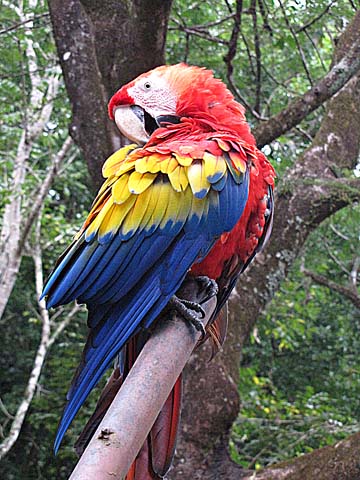
Scarlet macaws were at the entrance to the Mayan ruins of
Copan.
The scarlet macaw is the
national bird of Honduras.
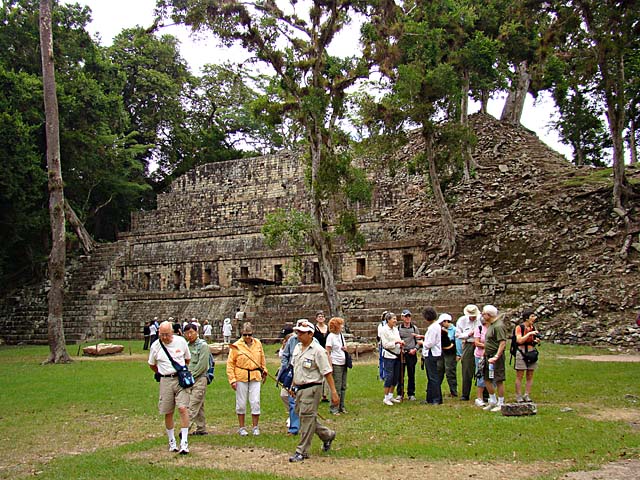
The central area of the site is made up of a series of large buildings organized
around open plazas. Our tour leader Ivania took photos on her own camera throughout the tour
and gave each of us a CD of the images. This is one of the photos she took. The most notable Mayan monuments
are the stepped pyramids they built in their religious centers and the accompanying palaces of their rulers.
Venus was the most important astronomical object to the Maya, more important than the sun. Maya believed in
the cyclical nature of time. The Maya priest had the job of interpreting these cycles and giving a prophetic outlook
on the future or past. The Maya practiced human sacrifice. They believed that the cosmos had 3 major planes:
the Earth, the underworld beneath, and the heavens above. Mayans believed that knowing the past meant knowing
the cyclical influences that create the present, and by knowing the influences of the present, one can see the cyclical
influences of the future.
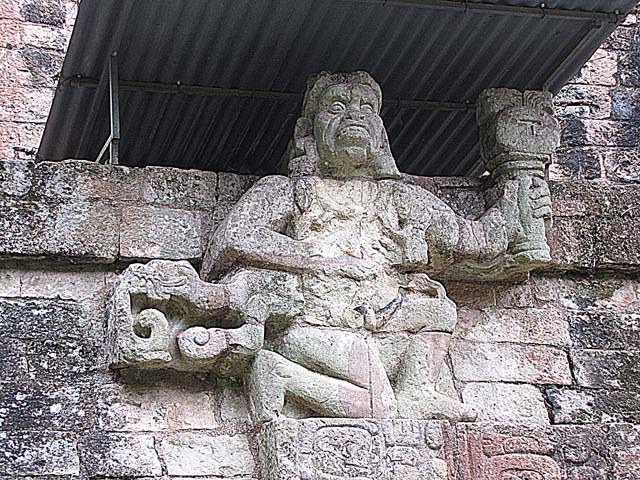
It is thought this is a howler monkey god, a major deity of the arts,including music, and a patron of the artisans.
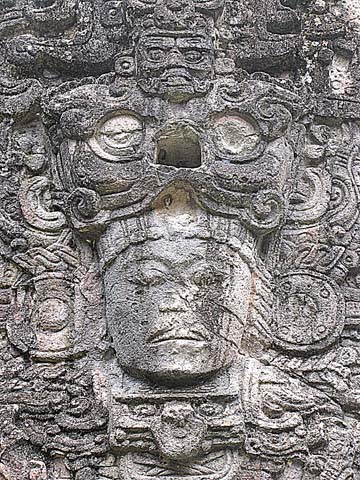
Carved stone slabs called stelae (the Maya called them tetun, or "tree-stones") depict rulers along with
hieroglyphic texts describing their genealogy, military victories, and other accomplishments.
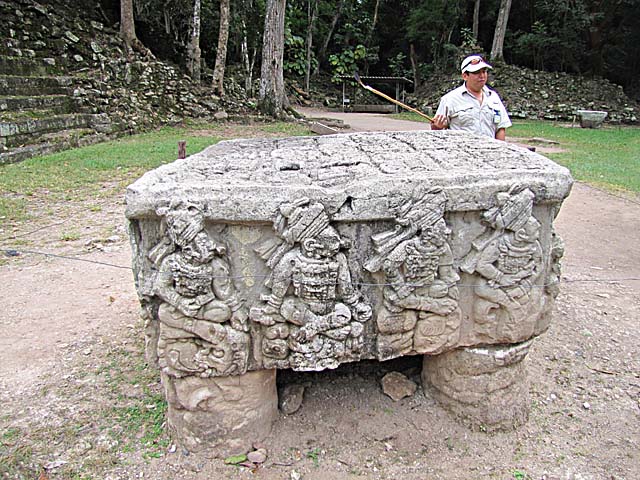
Among the ruins at Copan that have helped to unveil Mayan history is called Altar Q, a rectangular stone altar
with carved portraits of the first 16 of Copan's rulers from the founder Yax Kuk Mo to the last ruler Yax Pac.

Standing on top of one of the pyramids. I stopped wearing shorts to ruin sites after this day. While we did
not see many mosquitoes, some "noseeums" found me at this site. They are harmless, but the bites really itch.
We had overcast weather on a number of days but experienced rain only for short periods. Only one day,
in Belize, did we really experience a downpour.
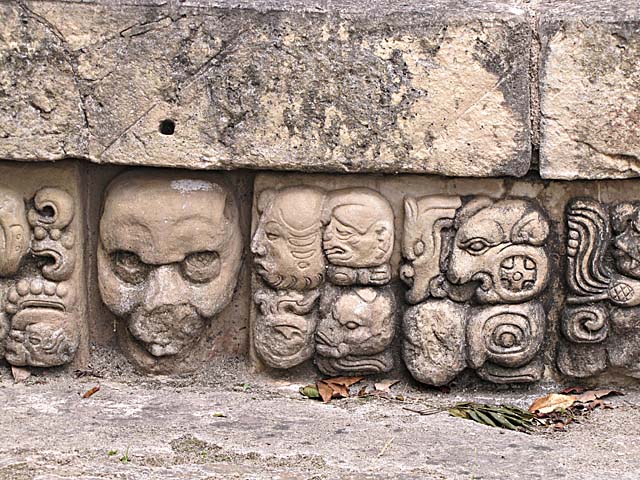
Underworld characters
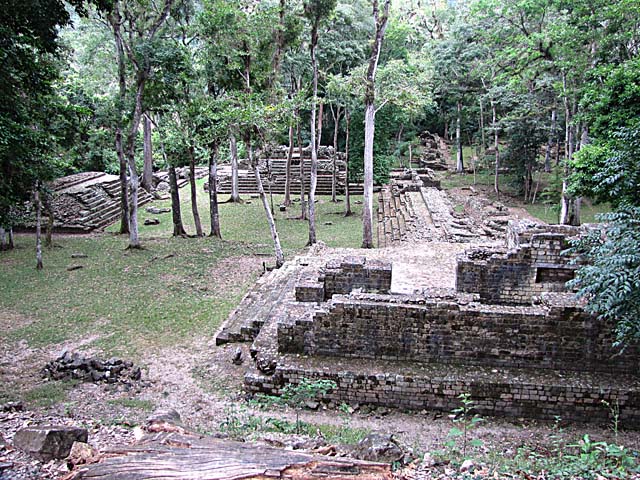
At the heart of the Maya city were large plazas surrounded by the most important government and religious
buildings, such as the great pyramid temples and occasional ball courts. All stone for Maya structures appears
to have come from local quarries. Open public plazas were the gathering places for people.
High ranking
families lived in houses distributed around courtyards. The majority of people were buried next to where they
lived. The residential area in this picture is called the Cemetery because skeletal remains were found here.
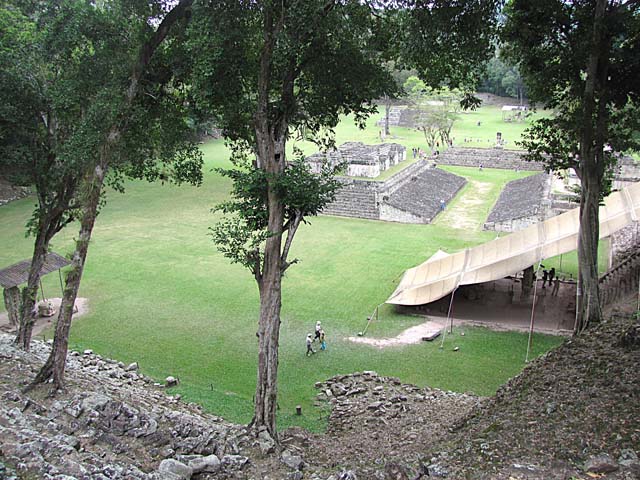
Seen below is the Hieroglyphic Stairway to the right, protected by a covering.
The ball court is behind and
beyond the Stairway. It
was used for playing an ancient ball game. The Hieroglyphic Stairway has
63 steps, with symbols carved into the stone.
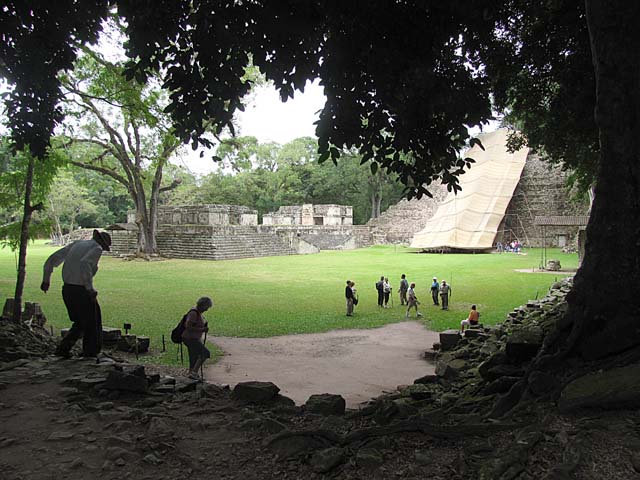
In the back on the right is the Hieroglyphic Stairway with a protective covering. In over 2000 hieroglyphs, the
stairway text recounts, at least partly, much of the site's dynastic history, beginning with references to the founder.
Buried underneath the Stairway are structures dating back to the first ruler.
The ancient belief system
gave great importance to recording
the dates of events, such as the reigns of rulers.
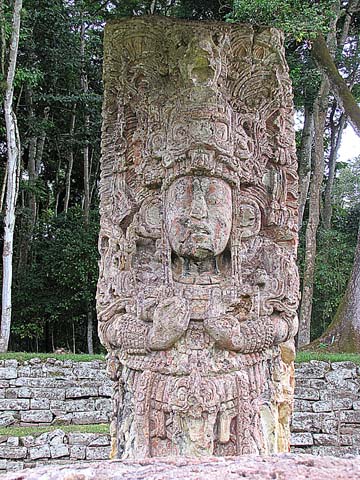
A stone monument in the Great Plaza that is scattered with
altars and carved stone columns, representing Mayan rulers.
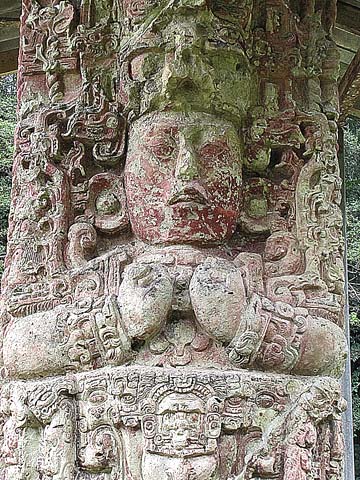
On December 21, 2012, the great cycle of the Maya calendar comes to an end. The meaning of
this event is debated.
Some believe that the Mayans foresaw this date as the end of the world.
There are a number of scholars that say the Mayans believed that the cycle would start anew after this date.
Cycles of time were very important to the Maya and were marked with elaborate celebrations.
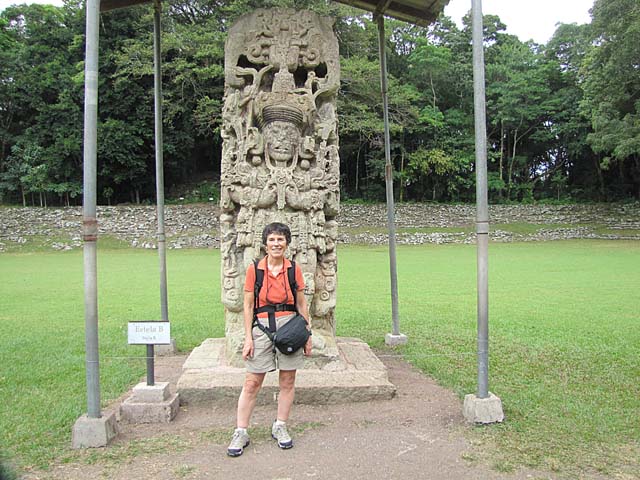
Here is the ruler "Eighteen Rabbit" who ruled Copan for 20 years (not me, the stone structure). His real
name
was very long
so he's referred to
as Eighteen Rabbit. His real name: Uaxaclajuun Ub'aah K'awiil.
He
personally commissioned 8 stelae or stone
monuments, seven of
which portray his image.
He ruled from 695 to 735 AD.
Link to Page 4 - Honduras continued
Link to Page One of Route of the Maya
Pat's Home Page